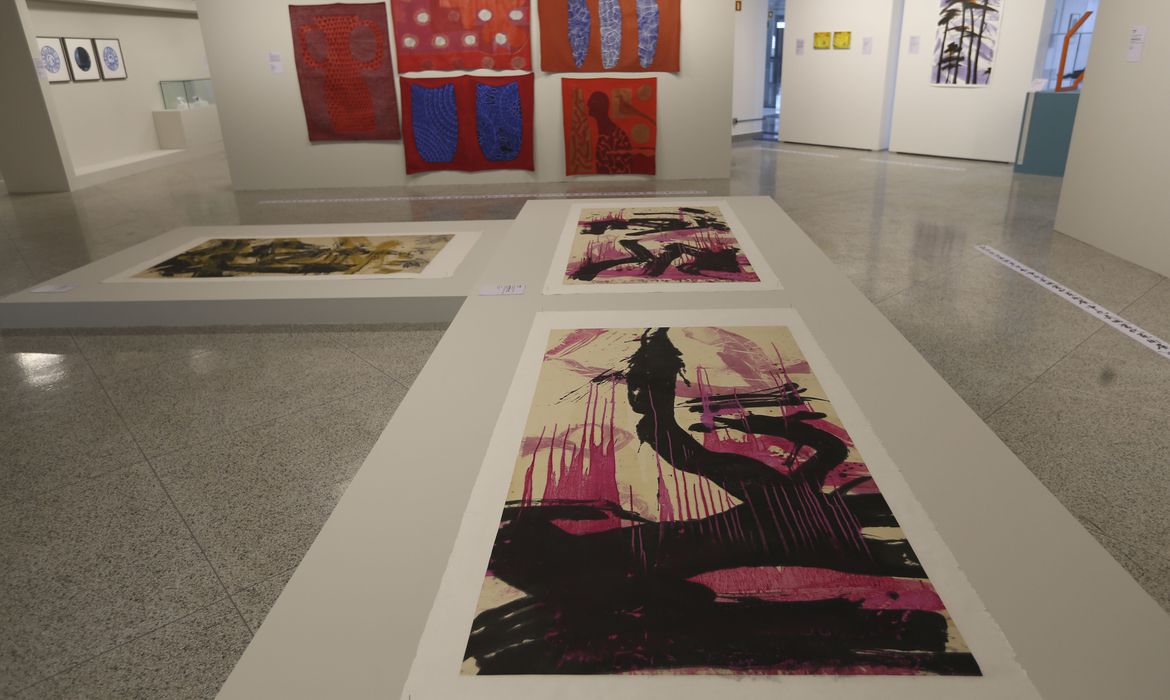RIO DE JANEIRO, BRAZIL – Works that aesthetically translate the covid-19 pandemic, the inequalities of globalization, the fragility of matter, environmental problems, human hypocrisy, and the narrow and desolate territory of prejudice are gathered in the exhibition Behind the Great Wall – New Chinese and Brazilian Art. The show, which brings together works by Chinese and Brazilian artists, is open to the public until May 22 at the Art Museum of Brasilia (MAB).
“The Chinese artists excel in creating works full of freshness, with reflections about the world we live in, but at the same time, they value local and traditional techniques and themes. From a dive into their own culture, they produce innovative works. This makes this production unique and vibrant in the international art arena,” said the curator from Minas Gerais, Clay D’Paula, who lives in Brasília.
To bring together the works exhibited in Brazil, he made several trips to China, and some pieces were created especially for the exhibition. “The public of Brasília will have the opportunity to see the project first hand before it is shown around the country and internationally,” said the curator.

The manager of the Art Museum of Brasília, Marcelo Jorge, believes that in a moment of confrontation between East and West, culture can create a bridge of understanding between the two sides. “The exhibition is a privileged occasion for us to better know China and vice-versa. Moreover, it is the first time in the history of the MAB that the institution receives works by artists from that country.”
CULTURAL CONVERGENCE
For the exhibition curator, a highlight of the exhibition is the relationship that some Brazilian artists establish with Chinese culture. “It is so strong that when the visitor reaches the exhibition rooms, it will be practically impossible for him to determine whether the work was created by a Chinese or a Brazilian artist. There is an immense aesthetic convergence between the two groups. This cultural confluence stimulated me to produce the exhibition, which took four years to organize”, said D’Paula.
According to the curator, some exhibitions of Chinese artists have already been held in Brazil, but not in such an imbricated way with the Brazilian culture and vice-versa. “In this project, there is no separation between the two groups of artists. The works relate and communicate with each other, flowing together like waters from the same river. And, at the same time, by creating new connections, they raise reflections about the global society in which we live. It is an art of the here and now”, he explained.
In the works, the artists use traditional elements of their own culture, such as calligraphy, Chinese ink, and traces of socialist realist painting, to produce creative and impactful works focused on current and global issues. The public will find pieces in various media and languages, such as painting (acrylic, oil, and Chinese ink), sculpture, photography, tiles, in situ art, animation, and paper cutting (icon of Chinese tradition).
DULCE SCHUNCK
The exhibition welcomes innovative and provocative works by other artists from Brasília, such as the artist from Rio Grande do Sul who lives in Brasília, Dulce Schunck. “[The works] connect with Chinese narratives but have a global vision, not provincial. With that, they offer new perspectives and stimulating readings for the observer,” says D’Paula.
To celebrate her journey, Dulce will gain an exclusive section in the exhibition to showcase her most celebrated and dynamic series, Flora of the Cerrado (2012-2021), fully steeped in Chinese vocabulary. “My works establish connections with the Chinese millennial worldview: an organic perception of nature, based on the awareness of unity and the interaction of its phenomena,” describes the artist.
With information from Agência Brasil

